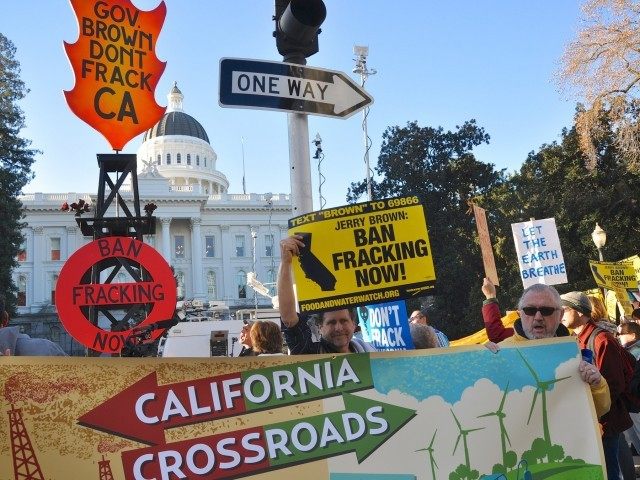The Environmental Protection Agency (EPA) released a long-postponed draft report Thursday on the impact of hydraulic fracturing (fracking). The regulators concluded that based upon “peer-reviewed studies as well as state and federal databases,” there is no evidence the practice has had a “widespread, systemic impact on drinking water.”
With oil leases on federal lands slashed by 52 percent during the Obama Presidency over “environmental concerns”, the EPA report clears the path for America’s oil boom to continue.
The EPA reported that despite the growth in domestic oil and gas production “raising concerns about potential impacts to human health and the environment, including potential effects on the quality and quantity of drinking water resources,” the EPA “did not find evidence” of widespread negative “systemic impacts on drinking water resources in the United States.”
The new EPA release comes on the eve of the of the Organization of Petroleum Exporting Countries’ release of the cartel’s long-term strategy forecast at their annual meeting in Vienna, Austria. Based on a leaked copy, Breitbart News reported that OPEC had effectively conceded defeat in its anti-shale oil war with the U.S.’ The OPEC report predicts continued rising U.S. production and a shrinking market for OPEC exports.
For over a century from 1870 to 1975, American world dominance in oil and gas production provided U.S. manufacturers with hyper-competitive, cheapm and bountiful domestic oil and natural gas supplies. But the combination of the huge costs of compliancewith ever-rising environmental mandates encouraged OPEC imports and devastated American manufacturing’s key “comparable advantage.” The result was a loss of over half of U.S. manufacturing jobs in the last 30 years, and the build-up of $10 trillion in national debt.
But the U.S. fracking boom has caused world oil prices to fall by 50 percent in the last year. Despite OPEC’s willingness to discount prices in hopes of preserving market share, U.S. imports of foreign oil still plunged by 750,000 barrels per day since April.
The U.S. Bureau of Economic Analysis announced Wednesday that America’s goods and services trade deficit had plunged by 20 percent, from $50.6 billion in March to $40.9 billion in April, following a $7.8 billion fall in March imports. In related news, OPEC revenues are collapsing and American’s disposable income is rising.
The EPA’s “Assessment of the Potential Impacts of Hydraulic Fracturing for Oil and Gas on Drinking Water Resources” documented that since the early 2000s, oil and natural gas production in the United States has transformed through the technological innovation of combining hydraulic fracturing with “advanced directional drilling techniques” to make “it possible to economically extract oil and gas resources previously inaccessible.” The resulting “surge in production increased domestic energy supplies and brought economic benefits to many areas of the United States.”
The fracking boom is rapidly expanding across America to new markets, especially in Democrat-dominated California. Over the last decade, about one-fifth of oil production in California came from wells that had been subject to hydraulic fracturing. But in the last year, “operators fractured about 125 to 175 wells of the approximately 300 wells installed per month in California,” according to the state-sponsored “Independent Scientific Assessment of Well Stimulation in California” produced by California Council on Science and Technology at the Lawrence Berkeley National Laboratory.
Despite Governor Jerry Brown’s national leadership on climate change legislation and sustainable energy mandates, he pushed through and signed the pro-fracking Senate Bill 4 in late 2013. With the Golden State fracking boom taking off, Breitbart News reported this week that many on the Left are now attacking the California Governor as “Big Oil Brown.”
Despite oil prices plunging, U.S. monthly production is rising by about 150,000 barrels per day (bpd). IHS CERA business analysts attribute continued production momentum on the cost to fracking dropping by 32 percent as drilling and service vendors slash prices to stay busy. Total U.S. petroleum liquids production hit 13.7 million bpd at the end of 2014, and could hit 15 million bpd by the end of 2015.
The EPA draft report is essentially the green light for the next stage of the U.S. oil boom. The EPA report will make it substantially harder for environmentalists to slow down the growth of production with new legislation or lawsuits built on “faux science” claims.
The Bureau of Land Management’s annual new oil and gas leases on federal lands fell from over 9,000 in 1988 to 1,100 last year. Now, the EPA determination could free millions of acres of never-developed federal land to power the U.S. fracking boom.

COMMENTS
Please let us know if you're having issues with commenting.